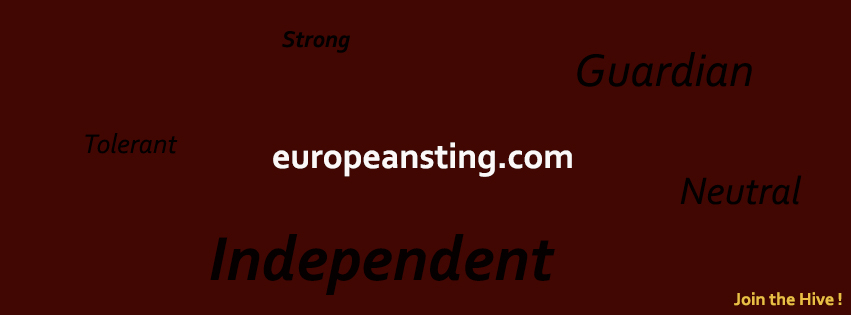
(Anastasiia Chepinska, Unsplash)
This article is brought to you thanks to the collaboration of The European Sting with the World Economic Forum.
Author: Khalid Abdulla-Janahi, Chairman, Vision 3 and Erik Berglof, Director, Institute of Global Affairs, School of Public Policy, London School of Economics & Political Sciences
- We need to find new ways of funding the IMF and World Bank.
- The G20 could make a “whatever-it-takes” statement, promising additional capital if the situation further deteriorates.
- We need to bring together the global financial safety net, the development finance architecture and the private sector to tackle the crisis.
The IMF and the World Bank – the two organizations at the centre of development finance – are organizing their (virtual) Spring Meetings this week. They are doing so at a time when the COVID-19 pandemic is exposing the global financial safety net and the development finance architecture to the most serious shock since both organizations emerged out of the ruins of two world wars and the Great Depression.
We urgently need to find new ways of securing funding for these multilateral institutions, including from the private sector, and, in the process, bring them closer together. This will require the same kind of leadership and innovative thinking and institution-building that marked their founding.
The two sides of the COVID-19 crisis – the medical emergency and economic impact – are closely intertwined. Many emerging and developing economies are actually hit first by the economic impact. Falling commodity prices, drops in tourism revenues, reduced remittances from citizens abroad and the rapid outflows of capital are ravaging their economies, even before the virus has taken hold. The economic devastation, in turn, will undermine their capacity to respond to the virus and threatens social and political stability in the medium term
The first responses from the IMF and the World Bank, and the regional development banks, have been powerful and welcome, but the demands on them will only increase as the crisis accelerates in the emerging and developing world. To effectively fight the virus and mitigate its broader impact, these institutions must be allowed to use their existing resources more effectively and ultimately they will need additional resources.
We suggest three reforms each to the global financial safety net, the development architecture and the capacity of the core institutions to crowd in the private and institutional capital.
The global financial safety net, with the IMF at the core, but complemented by a patchy and incomplete system of regional arrangements, mainly in Europe and Asia, is critical in providing liquidity and maintaining financial stability. Yet the current firepower of the IMF is insufficient to deal with the magnitude of this crisis. The IMF is already processing more than 90 requests from countries for emergency financing, and another 50 or so are in the wings. Countries need liquidity to address the medical emergency, but most of all to deal with the economic impact. There have been many ideas proposed for how to strengthen the global financial safety net, several of them discussed in the final report from the G20 Eminent Persons Group on Global Financial Governance (EPG) presented a couple of years ago.
1. Establish liquidity support lines
One such proposal was to establish a liquidity facility to which prequalified countries in need could turn. Prequalification could avoid the stigma associated with applying for support.
2. Give the IMF a role in a network of central bank swap lines
Such liquidity lines could be supplemented by the IMF intermediating support lines from systemic central banks to central banks in well-run emerging economies with liquidity problems.
3. Issue Special Drawing Rights
Proposals 1 and 2 would rely on the IMF’s existing resources and would still not meet the enormous liquidity requirements that will eventually lead to solvency threats in many countries. The most direct way to provide additional capital to the IMF would be to issue additional Special Drawing Rights (SDR), the special currency through which the member states support the IMF. The EPG carefully avoided this proposal, due to the limitations to its mandate, but an SDR issue would both increase firepower and offer a valuable stimulus to the global economy.

The World Bank has responded with a massive effort to help address both the medical and economic emergencies. It has strong expertise in the health and well-functioning cash transfer programmes and local community schemes in a very large number of countries that can be used to reach the most vulnerable, but its resources are also insufficient. As the economic impact from lockdowns and supply disruptions starts to bite, the World Bank’s financing needs will increase dramatically. Most governments in emerging and developing economies lack the resources to do meaningful monetary and fiscal stimulus.
Fortunately, many of the multilateral development banks (MDBs) were recently recapitalized or have free capacity, and can respond in the short term. But on the current trajectory, they will run out of “headroom”, impeding their ability to respond. Added to this, the quality of their portfolios will deteriorate as the economic impact from the pandemic works its way through the system. There are already signs that the costs of borrowing are going up for some of the weaker institutions. At some point, the rating agencies will look at their portfolios and the creditworthiness of their shareholders.
4. Establish liquidity backstop for MDBs
One innovation that could help the MDBs increase their lending capacity would be to provide them with a so-called liquidity backstop. Unlike commercial banks most multilateral development banks lack automatic access to support from governments in the case of a liquidity shortfall. Rating agencies would upgrade them if a group of central banks came together, possibly intermediated through the IMF, and provided a liquidity facility. The European Investment Bank has access to such support from the ECB.
5. Introduce new form of equity capital
A related proposal would be to provide the development banks with a new form of capital. Today they have two types of capital – paid-in capital which counts as equity on the banks’ balance sheets; and callable capital which can only be used when a development bank is closed down to pay off bondholders. It would be useful to have an intermediate form of capital that could be called in when banks are exposed to a shock like the current one. Again rating agencies would recognise such support in their ratings. The European Stability Mechanism has this type of contingent capital.
6. Make a G20 “whatever-it-takes” statement
Even if these two ideas could not be realized at the moment, the G20 could, with support from other key shareholders, make a “whatever-it-takes” statement, promising that additional capital would be forthcoming if the situation further deteriorated. While such a statement might not immediately impress rating agencies, it could inspire innovation and big ideas inside and outside the MDBs. It would also reassure governments in the worst-hit emerging and developing economies that resources will be forthcoming.
What is the World Economic Forum doing about the coronavirus outbreak?
A new strain of Coronavirus, COVID 19, is spreading around the world, causing deaths and major disruption to the global economy.
Responding to this crisis requires global cooperation among governments, international organizations and the business community, which is at the centre of the World Economic Forum’s mission as the International Organization for Public-Private Cooperation.
The Forum has created the COVID Action Platform, a global platform to convene the business community for collective action, protect people’s livelihoods and facilitate business continuity, and mobilize support for the COVID-19 response. The platform is created with the support of the World Health Organization and is open to all businesses and industry groups, as well as other stakeholders, aiming to integrate and inform joint action.
As an organization, the Forum has a track record of supporting efforts to contain epidemics. In 2017, at our Annual Meeting, the Coalition for Epidemic Preparedness Innovations (CEPI) was launched – bringing together experts from government, business, health, academia and civil society to accelerate the development of vaccines. CEPI is currently supporting the race to develop a vaccine against this strand of the coronavirus.
Yet, the governments behind both the IMF and the development banks are also weakened by the crisis and domestic needs will be gigantic. New ways must be found to crowd in private and institutional capital. The EPG Report pointed to a number of steps which could be taken, all on a much greater scale than today.
7. Allow the IMF to borrow from markets
The IMF could be allowed to borrow in the capital markets, potentially using currently unused SDRs as collateral. Such lending would have to be associated with important safeguards to prevent private sector bias in lending, but it could significantly increase IMF firepower.
8. Pool balance sheets to increase MDB borrowing capacity
On the side of the development finance institutions, there should be scope for more pooling of balance sheets, after all they have more or less the same shareholders, if in somewhat different constellations. There are limits to what can be achieved through such efforts, but particularly for the smaller institutions with concentrated portfolios this could prove very important. As a by-product, the participating institutions would be encouraged to standardize loan agreements and generally become more coherent as a system.
9. Crowd in private and institutional capital on country platforms
A core EPG proposal is the establishment of country platforms where governments can coordinate their collaboration with international financial institutions, including bilateral donors and the entire UN system. These platforms, now being piloted in a large number of countries, should be opened up to the private sector and be used to crowd in private and institutional capital by mitigating risk for investors, but also to ensure that agreed governance standards are enforced and debt sustainability requirements respected.
When the EPG was first set up there were questions as to why the group should deal with both the development finance architecture and the global financial safety net in the same report. The COVID-19 crisis has proven how intimately linked these are. The nine ideas we have put forward here would bring together the global financial safety net, the development finance architecture and the private sector to enable the powerful global response that the current crisis requires.




















[…] Source link […]